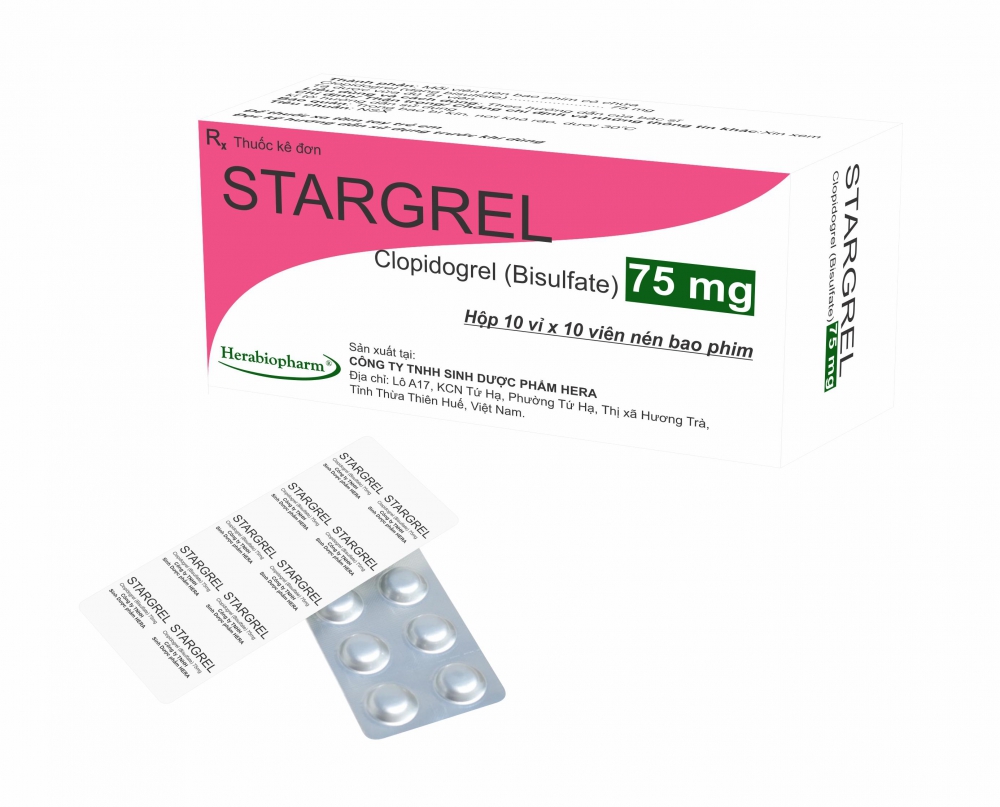Indications, posology and method of administration
THERAPEUTIC INDICATIONS
Clopidogrel is indicated in:
Thrombosis prevention:
Adult patients suffering from myocardial infarction (from a few days until less than 35 days), ischaemic stroke (from 7 days until less than 6 months) or established peripheral arterial disease.
Adult patients suffering from acute coronary syndrome:
- Non-ST segment elevation acute coronary syndrome (unstable angina or non-Q-wave myocardial infarction), including patients undergoing a stent placement following percutaneous coronary intervention, in combination with acetylsalicylic acid (ASA).
- ST segment elevation acute myocardial infarction, in combination with ASA in medically treated patients eligible for thrombolytic therapy.
Prevention of atherothrombotic and thromboembolic events in atrial fibrillation:
In adult patients with atrial fibrillation who have at least one risk factor for vascular events, are not suitable for treatment with Vitamin K antagonists (VKA) and who have a low bleeding risk, clopidogrel is indicated in combination with ASA for the prevention of atherothrombotic and thromboembolic events, including stroke.
POSOLOGY AND METHOD OF ADMINISTRATION
Posology:
Adults and elderly:
Clopidogrel should be given as a single daily dose of 75 mg.
Non-ST segment elevation acute coronary syndrome (unstable angina or non-Q-wave myocardial infarction): clopidogrel treatment should be initiated with a single 300mg or 600 mg loading dose. A 600 mg loading dose may be considered in patients < 75 years of age when percutaneous coronary intervention is intended (see section 4.4). Clopidogrel treatment should be continued at 75 mg once a day (with acetylsalicylic acid (ASA) 75 mg – 325 mg daily). Since higher doses of ASA were associated with higher bleeding risk it is recommended that the dose of ASA should not be higher than 100 mg. The optimal duration of treatment has not been formally established. Clinical trial data support use up to 12 months, and the maximum benefit was seen at 3 months.
ST segment elevation acute myocardial infarction: clopidogrel should be given as a single daily dose of 75 mg initiated with a 300-mg loading dose in combination with ASA and with or without thrombolytics. For medically treated patients over 75 years of age clopidogrel should be initiated without a loading dose. Combined therapy should be started as early as possible after symptoms start and continued for at least four weeks. The benefit of the combination of clopidogrel with ASA beyond four weeks has not been studied in this setting.
In patients with atrial fibrillation, clopidogrel should be given as a single daily dose of 75 mg. ASA (75 – 100 mg daily) should be initiated and continued in combination with clopidogrel.
If a dose is missed:
- Within less than 12 hours after regular scheduled time: patients should take the dose immediately and then take the next dose at the regular scheduled time.
- For more than 12 hours: patients should take the next dose at the regular scheduled time and should not double the dose.
Paediatric population
Clopidogrel should not be used in children because of efficacy concerns.
Renal impairment
Therapeutic experience is limited in patients with renal impairment.
Hepatic impairment
Therapeutic experience is limited in patients with moderate hepatic disease who may have bleeding diatheses.
Method of administration:
For oral use. It may be given with or without food.
CONTRAINDICATIONS
- Hypersensitivity to the active substance or to any of the excipients.
- Severe hepatic impairment.
- Active pathological bleeding such as peptic ulcer or intracranial hemorrhage.
